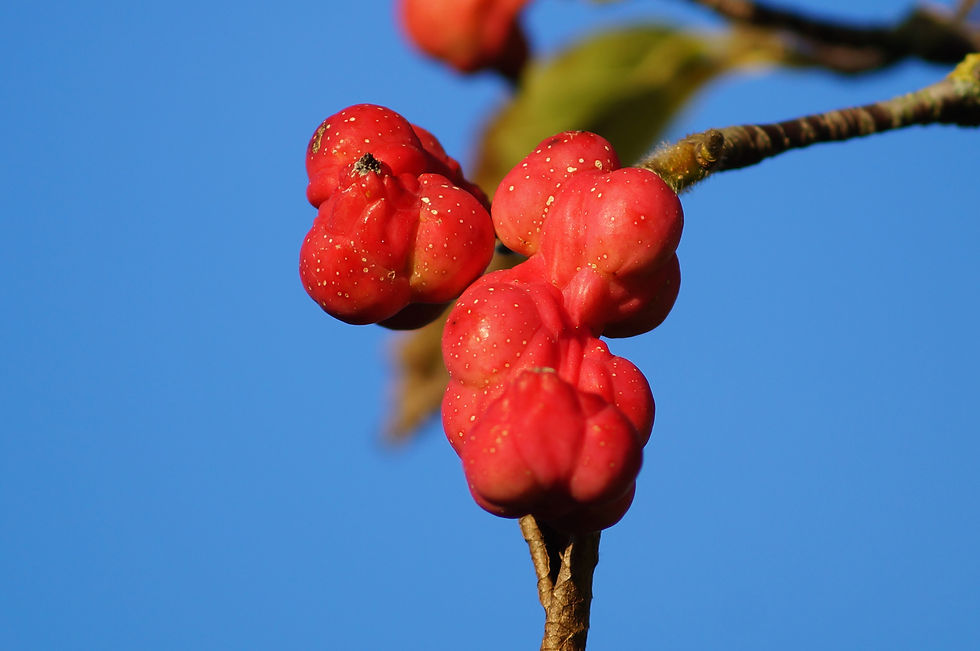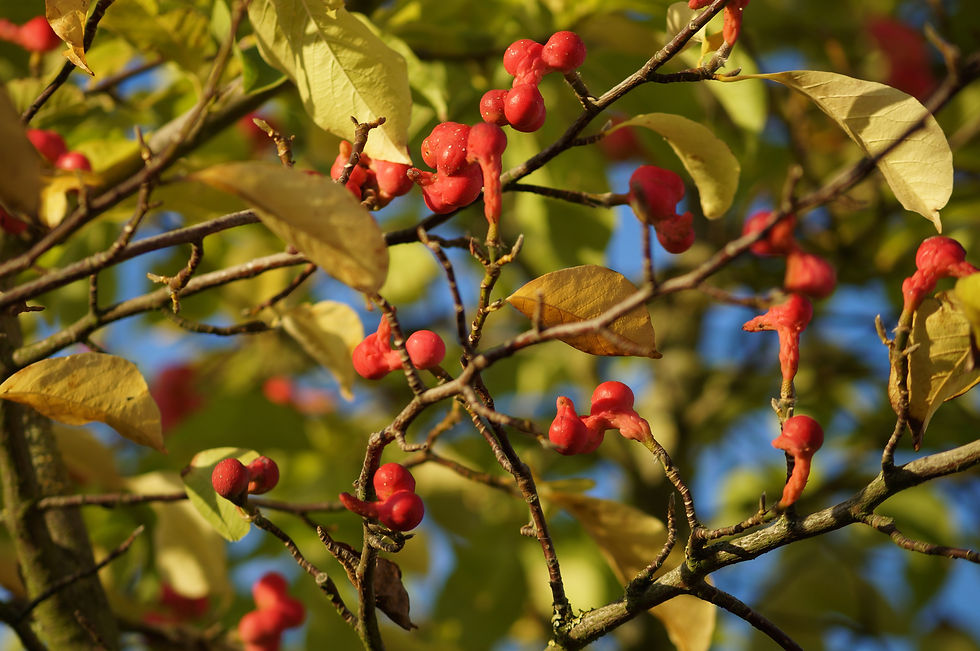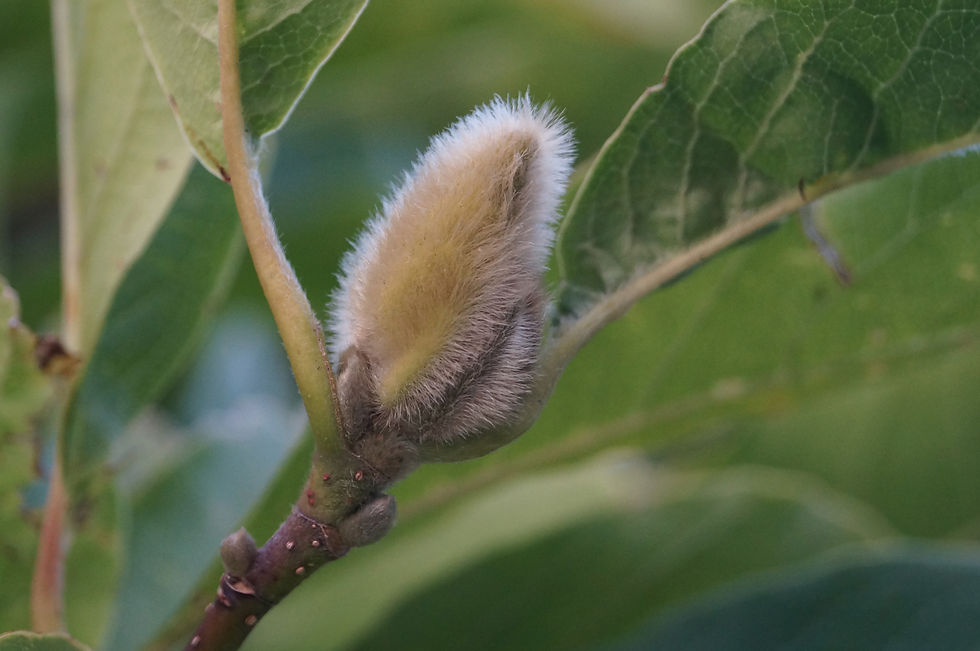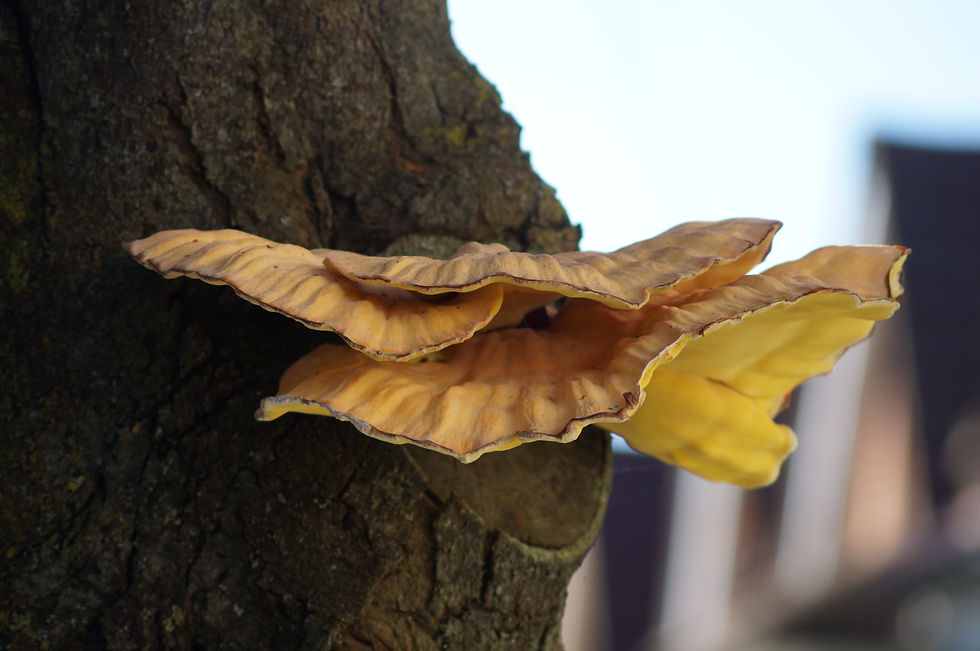We’re well into autumn now, and the seasonal colours are coming along nicely. Burbage Road, Stradella Road and Winterbrook Road are all worth visiting this month for their cherries, limes and of course the sweet gums (Liquidambar styraciflua), like this one at 103 Stradella:

The Tree Watch planting plan
We’ve updated our plans for planting trees this coming season (November-March) in locations where none have been grown in recent memory. We’ve got enough funds to spend for a total of around 34 trees, but we’ve provisionally listed 39 on the understanding that some places we’ve suggested might not be suitable.
Streets with long stretches that have always been bare get priority. Danecroft Road has been allocated five trees: three at the top of the road and two at the bottom, where it joins Elmwood Road. Wyneham Road is also listed for five, all but one of them on the very sparsely planted north (even-numbered) side.
Four trees have been earmarked for Carver Road: three at the Half Moon Lane end and one at the corner of Herne Hill. Nairne Grove is also down for four, all of them native field maples (Acer campestre): two on the even side of the road and two on the odd side. At Red Post Hill we’re proposing three dogwoods (Cornus) for interplanting among the black pines on the grassy crescent outside nos. 65 to 79, plus a plane tree to stand outside St Faith's church car park.
Casino Avenue gets three new trees, all between nos. 18 and 26. So does Herne Hill: two elms in the gardens of Denesmead and Pynnersmead and a plane tree at the junction with Casino Avenue.
Two each are going to Frankfurt Road, Half Moon Lane, Holmdene Avenue and Warmington Road, and finally there’s one apiece for Elfindale Road, Hollingbourne Road and Ruskin Walk. The Hollingbourne and Ruskin trees have been deliberately placed so that they’ll be visible from Warmington Road too.
The nine streets that are missing out are all pretty well furnished with trees already. They are Ardbeg Road, Beckwith Road, Burbage Road, Delawyk Crescent, Elmwood Road, Howletts Road, Stradella Road, Sunray Avenue and Winterbrook Road. Of those nine, Delawyk, Sunray and Winterbrook are in line for new trees in the coming season from the council’s main planting schedule. Other streets will benefit too, and we’ll pass on more details of Southwark’s plans as soon as they’re confirmed.
Asking your neighbours’ views
You can see the exact locations we’re suggesting and the species we’re recommending in this table. Can we please ask all the street leaders to check that residents who live at or very near the proposed planting sites are in favour?
You can do this via your street email or WhatsApp group, by knocking on their doors or by slipping a note through their letterboxes. If they’re unhappy the council won’t plant there. Please come back to us as soon as you can with the results of these mini-consultations and we’ll make a note.
Big plans for Casino
Casino Avenue has some unusual and lovely trees in its three cul-de-sacs, but the road itself has always been one of the most barren in the area, with long stretches entirely devoid of trees, especially as it climbs towards Herne Hill. We’ve set out to change that and to eventually create a spectacular magnolia avenue to rival the famous Yoshino cherry display on Winterbrook Road and Stradella Road.
There are already 17 magnolias on Casino and we’re aiming to increase this by another nine over the course of the next two planting seasons. We’re hoping to start this coming winter (November-March) with three magnolias on the pavement between nos. 18 and 26, using some of the funds from our earlier Cleaner Greener Safer (CGS) awards.
Over the road, opposite nos. 6-8, the council is putting in a ginkgo (Ginkgo biloba) that was held over from last year’s planting list, while outside no. 53-55 they’ve scheduled a replacement for a dead hawthorn. Residents would like to see a flowering cherry there instead.
In the same cul-de-sac Southwark wants to replace a dead rowan outside no. 83, but it’s in a hedge and the council can’t replant in the same spot. Instead, our volunteers on Casino would prefer the replacement to go on the wide pavement outside no. 112, at the corner of Red Post Hill, where there’s room for a decent-sized tree.
The Casino magnolia theme will continue next year. Herne Hill Tree Watch has put in two new applications for CGS funds from Southwark that will help further transform the neighbourhood in 2022-23. The first is for £6,000 to cover the cost of six more magnolias on the odd-numbered side of the road between Sunray Avenue and Red Post Hill. There’s only a single tree here, between nos. 117 and 135, but seven on the opposite side.
Our second bid is for £3,500 to plant seven small trees in the grassy square between the flats at nos. 36-86. There are already three hornbeams, two hollies and a reviving ginkgo here but residents would like some colour, or maybe some fruit trees.
The strange fruit of the magnolia
Southwark plants five types of magnolia across the borough, but so far we’ve only been able to firmly identify one species on Casino - the northern Japanese magnolia (Magnolia kobus). That’s because of its extraordinary fruit. Earlier in October you could see it especially well at 100 Casino and eight doors down at no. 116, where the crown was speckled red:

Close up, the strange appearance of the fruit comes as a real surprise the first time you stumble across it.

Here’s another, more squat and bulbous this time:

Each lumpy red blob is a kind of seed pod, known in botanical terms as a follicetum, and the individual berry-like fruits inside it are called follicles. When the follicles drop to the ground or are taken by birds, they leave a red stalk which makes the fruit look even weirder:

These two look like exotic birds roosting in the twilight:

As the fruit disappear and the big leathery leaves colour and fall, the Kobus magnolias of Casino are incubating their fragrant white flowers inside big furry buds, getting them ready to burst open in March/April.

Tree injuries
There were a couple of incidents of tree damage in September, both to sweet gums . These handsome trees, often referred to by their botanical name Liquidambar, are well suited to planting on streets and admired especially for their striking autumn colour. But their wood is particularly brittle and boughs can fall in high winds. High-sided vehicles also seem to snap off more branches from sweet gums than any other trees
The weather on the morning of September 27 was especially fierce, with heavy rain and wind, and two large branches came down from the sweet gum outside 45 Half Moon Lane. The injuries were so severe - with a lot of wood torn from the main stem in two places - that the tree sadly had to be felled the same day.
The damage on Howletts Road, two and a half weeks earlier, was more likely to have been caused by a commercial vehicle. This narrow little street is very busy with vans parking, making deliveries and doing three-point turns and branches are frequently broken off. In the latest case a large branch was torn from the tree, leaving a big gash that can easily turn into an entry point for disease and decay.
We’ve asked the tree officers to replace the Half Moon Lane tree in the coming planting season, and to lift the crowns on the three sweet gums on Howletts. That means cutting off enough lower branches that the crown is out of reach of most vans and lorries.

Tree disease
An extraordinary, very large and beautiful growth appeared on the trunk of a cherry plum outside 19 Beckwith Road early this month, at the site of an old pruning cut. It’s a bracket fungus, what’s called the fruiting body of a fungus that’s living deep in the heartwood.

There are scores of different brackets in the UK and their purpose is to reproduce the fungus in other trees. They release masses of spores that blow in the wind, settle on a wound and make their way into the heartwood. Often the emergence of a bracket fungus is the first sign that there’s white or brown rot inside the tree. As the Royal Horticultural Society says on its website, “By the time a bracket appears there will usually have been extensive heartwood decay.”
The red-leaved cherry plum (Prunus cerasifera pissardii) seems to be particularly susceptible to decay, although all trees in the Prunus genus - cherries, plums, almonds and other stone fruit - are at risk.
Our streets have lost many of the once-common cherry plums in recent years, including three felled on Carver Road in 2020 alone. They're among the first trees to flower in the spring, with masses of pink blossom in March, but they’re short-lived - perhaps as little as 20 years - and it seems all the trees of the same generation round here are rapidly dying off.
Check out the older trees on your street to see if they have any fungal growths on the trunk. Another cherry plum, at 50 Ruskin Walk, has two smaller brackets at the base, while the London plane (Platanus x hispanica) at 28 Elmwood Road has a different kind of fruiting body.
The Great Plane of Mottisfont
Finally, you might think that our stately London planes are big, but down in Hampshire, at the National Trust’s Mottisfont property, stands the biggest in the UK: 36 metres (around 120 feet) high with a trunk that’s 12 metres (40 feet) in circumference.

Planted around 1725, some 40 years after the London plane (Platanus x hispanica) was introduced in this country, the Great Plane of Mottisfont almost dwarfs the Georgian house and covers a huge plot of land. What looks like a second, smaller plane tree next to it turns out to be a giant sucker, a spur off one of the parent tree’s roots.

The Great Plane - one of 15 mature planes at Mottisfont - may be the biggest in the country, but it’s not the oldest. That accolade is shared by a London plane at the Bishop’s Palace in Ely, Cambridge, and one behind the Barn Elms playing fields in Barnes, London, both planted in about 1680.
Comments